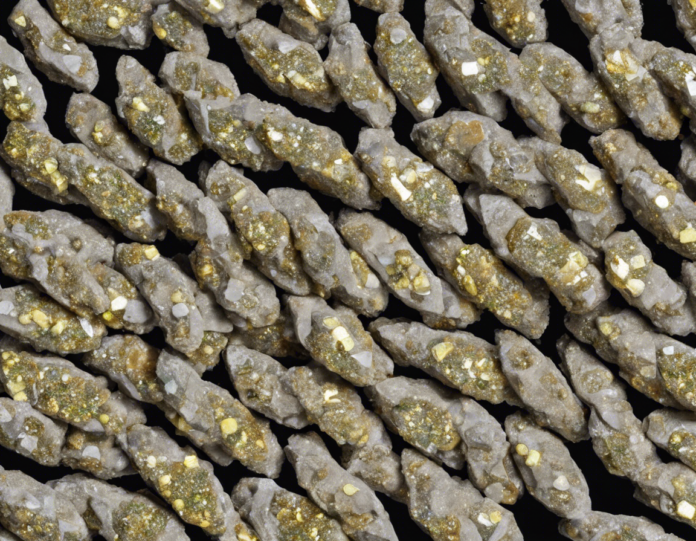Introduction
Pavement distress is a common issue in the field of civil engineering and transportation infrastructure. One of the most prevalent types of distress is pave strain, which refers to the deformation or movement of pavements under various loading conditions. Understanding pave strain is crucial for designing durable and safe roads that can withstand the challenges of heavy traffic and environmental factors.
What is Pave Strain?
Pave strain is the term used to describe the deformation or movement that occurs within a pavement structure in response to applied loads. This strain can manifest in various forms, such as rutting, cracking, or permanent deformation, and can be influenced by factors like traffic volume, vehicle types, climate, and pavement materials.
Types of Pave Strain
-
Elastic Strain: Elastic strain refers to the temporary deformation that occurs in a pavement when subjected to loading. This type of strain is reversible, meaning the pavement will return to its original shape once the load is removed. Elastic strain is essential to consider in pavement design to ensure that the structure can withstand repeated loading without permanent deformation.
-
Plastic Strain: Plastic strain occurs when a pavement undergoes permanent deformation due to excessive loading or repeated stress cycles. This type of strain is irreversible and can lead to distress mechanisms like rutting, cracking, and fatigue failure. Plastic strain must be minimized through proper design, material selection, and construction techniques to ensure the longevity of the pavement.
Factors Affecting Pave Strain
-
Traffic Load: The magnitude and frequency of traffic loads have a significant impact on pave strain. Heavier vehicles or high traffic volumes can induce higher levels of strain on the pavement, leading to accelerated distress and deterioration.
-
Pavement Structure: The design and composition of the pavement layers can influence pave strain. Proper layer thickness, material properties, and structural support are essential for distributing loads and minimizing strain within the pavement structure.
-
Environmental Conditions: Climate factors such as temperature variations, moisture infiltration, and freeze-thaw cycles can affect pave strain. Pavements in regions with extreme weather conditions are more susceptible to distress mechanisms caused by environmental factors.
-
Construction Quality: The quality of construction practices, including compaction, joint construction, and surface preparation, can impact pave strain. Poor construction techniques can result in uneven stress distribution and premature pavement failure due to excessive strain.
Preventing and Mitigating Pave Strain
-
Proper Design: A well-designed pavement structure that considers traffic volume, soil conditions, and climate factors can help mitigate pave strain. Implementing appropriate layer thickness, reinforcement, and drainage features can improve the pavement’s ability to withstand strain.
-
Material Selection: Choosing high-quality materials with suitable stiffness, durability, and fatigue resistance is crucial for preventing pave strain. Asphalt mix designs, aggregate quality, and binder selection play a significant role in the pavement’s ability to resist deformation and distress.
-
Regular Maintenance: Routine maintenance activities such as crack sealing, pothole patching, and surface treatments can help reduce pave strain and prolong the pavement’s service life. Timely repairs and preservation treatments can address minor distress issues before they escalate into more significant problems.
-
Traffic Management: Implementing traffic management strategies like weight restrictions, speed limits, and axle load controls can minimize pave strain caused by heavy or excessive vehicle loads. Proper traffic planning and enforcement can help protect the pavement from premature deterioration.
FAQs (Frequently Asked Questions)
-
What are the common signs of pave strain in pavements?
Pave strain can manifest as rutting, cracking, potholes, unevenness, or surface deformation in pavements. -
How can pave strain impact road safety?
Excessive pave strain can compromise the structural integrity of pavements, leading to reduced skid resistance, drainage problems, and increased accident risk. -
Is pave strain more prevalent in certain types of pavements?
Pave strain can affect both flexible (asphalt) and rigid (concrete) pavements, but the extent and severity of strain may vary based on the pavement type and design. -
Can preventive maintenance help reduce pave strain in pavements?
Regular maintenance activities like seal coating, crack sealing, and pavement repairs can mitigate pave strain by addressing minor distress issues and preventing them from worsening. -
How does climate variability impact pave strain in pavements?
Extreme weather conditions such as temperature fluctuations, moisture content, and freeze-thaw cycles can exacerbate pave strain by causing thermal expansion, contraction, and moisture-induced distress in pavements.
